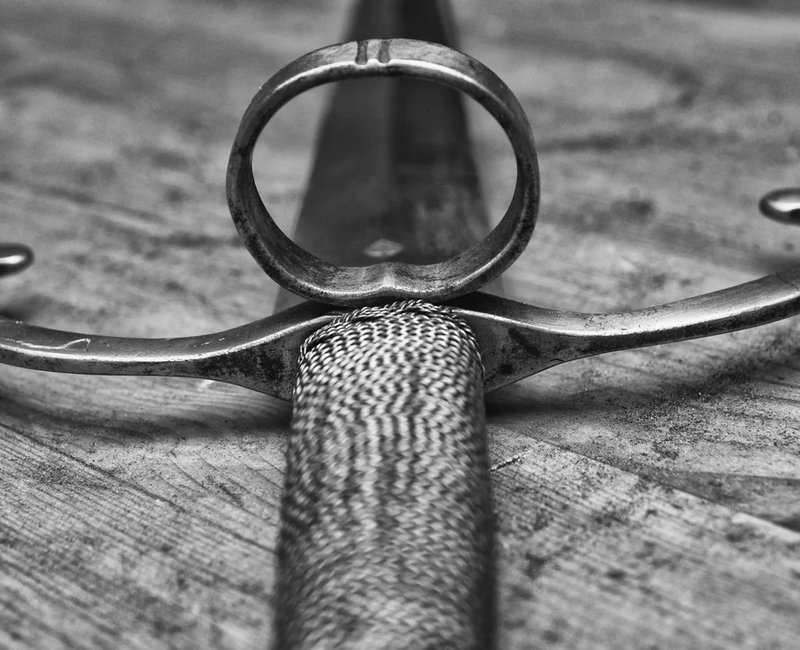
Dagger
The renaissance dagger comes in two form the Rondel Dagger and the Pugnale Bolognese. The rondel dagger is a specialised thrusting weapon that emerged in medieval Europe, primarily during the 14th to 16th centuries. It features a narrow, rigid blade—often triangular, circular, or diamond-shaped in cross-section—designed for piercing armour and penetrating gaps in plate or mail. The blade’s stiffness makes it highly effective for close combat and grappling situations.
The dagger is named after its distinctive hilt design, which includes two circular or disk-shaped guards: one protecting the hand at the base of the blade and the other serving as a pommel. These rondels provide both structural stability and a secure grip, ensuring the dagger can deliver powerful, controlled thrusts.
The pugnale bolognese is a distinctive Italian dagger from the Renaissance period, commonly associated with the fencing traditions of Bologna. It features a double-edged, tapered blade designed for precise thrusting and slashing, making it an effective weapon for both offence and defence.
The hilt often incorporates complex guard designs, including crossbars, side rings, or knuckle guards, which provide protection for the wielder’s hand and allow for advanced parrying techniques. These features reflect the influence of the Bolognese School of fencing, where the dagger was used alongside a sidesword or as a standalone weapon in civilian duels and self-defence.
Dagger forms part of our regular Thursday night class sylabus
Joachim Meyer’s dagger system, as outlined in his 1570 treatise, is a practical and efficient approach to close-quarters combat. It focuses on the use of a simple, robust dagger, typically with a straight, double-edged blade, to deliver both thrusting and cutting techniques. Meyer’s dagger techniques are grounded in the principles of German martial arts, emphasizing timing, control, and strategic movement.
The system incorporates methods for attacking, defending, and countering within grappling range. Techniques include thrusts, slashes, disarms, and joint manipulations, often combined with footwork to gain leverage or create openings. Meyer places significant emphasis on responding dynamically to an opponent’s actions, making the dagger an adaptable and versatile tool for self-defence or combat.
Meyer’s dagger system also includes an element of grappling and wrestling, reflecting its intended use in situations where swords or larger weapons are impractical. It captures the essence of Renaissance martial arts, blending effectiveness with the finesse characteristic of Meyer’s fencing style.
Marozzo’s dagger system, as detailed in Achille Marozzo’s 16th-century treatise Opera Nova, is a sophisticated and practical approach to dagger combat rooted in the Italian Bolognese fencing tradition. It emphasises both offensive and defensive techniques, making the dagger a versatile weapon for self-defence, dueling, and close combat.
The system incorporates thrusts, cuts, and hand-to-hand techniques, often involving the use of the dagger in conjunction with a cloak, buckler, or even bare hands. Marozzo’s methods focus on quick, decisive actions, leveraging the dagger’s compact size and speed to counter opponents effectively. The techniques include parrying an opponent’s attack, redirecting their blade, and exploiting openings for counterattacks.
Marozzo also integrates grappling and disarming techniques into his dagger work, reflecting the close-quarters nature of dagger combat. His system is notable for its emphasis on precise timing, body mechanics, and strategic positioning, making it both a practical and artful component of Renaissance martial training.